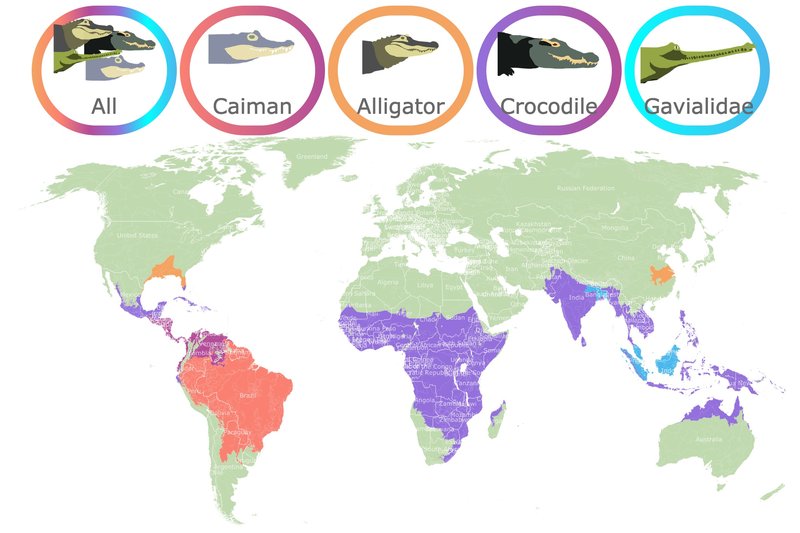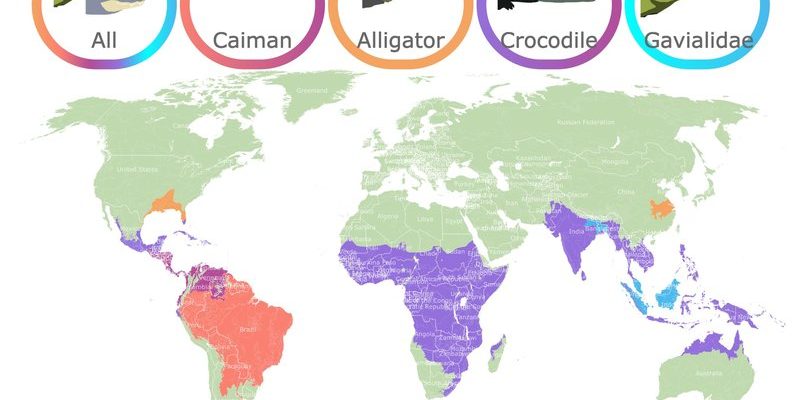
Nile crocodiles are primarily found in Africa, but their reach spans various ecosystems. From lush riverbanks to arid regions, these creatures are incredibly versatile, making them one of the most widespread crocodilian species. But how do they fit into such diverse environments? By understanding their habitat and distribution, we can appreciate how Nile crocodiles survive and thrive in the wild. So, grab a cup of coffee, and let’s break it down!
Natural Habitat of Nile Crocodiles
Nile crocodiles are found in various water bodies, including rivers, lakes, and wetlands. Their habitats are key to their survival. Here’s what you need to know about where they like to live.
Rivers and Lakes
You might spot these reptiles lounging on sun-warmed rocks or in shallow waters. Nile crocodiles prefer freshwater systems, where they can bask and hunt. Major rivers like the Nile, Zambezi, and Congo are popular spots. These waterways provide a steady food supply, typically consisting of fish and birds, along with safe places to lay eggs.
Wetlands and Marshes
Wetlands are another ideal habitat for Nile crocodiles. These areas are often rich in biodiversity, offering plenty of hiding spots and plenty of food. Here, they can easily ambush prey and evade larger predators. You can picture them lurking quietly amidst the reeds, waiting for just the right moment to strike.
Geographic Distribution Across Africa
So, where exactly can you find Nile crocodiles across the continent? Their distribution is quite remarkable and spans several countries.
East Africa
Nile crocodiles thrive in East Africa, particularly in countries like Kenya and Tanzania. The renowned Serengeti National Park and the famous Mara River are hotspots where these creatures can be seen in their natural habitat. They’re a vital part of the ecosystem, helping keep fish populations in check.
West Africa
In West Africa, crocodiles inhabit rivers and swamps, especially in countries like Senegal and Nigeria. Here, they face challenges from human activity, like habitat destruction and hunting. This region shows the importance of conservation efforts to protect these remarkable reptiles.
Adaptations to Their Environment
Nile crocodiles are experts at surviving in diverse environments thanks to their unique adaptations. Let’s look at some traits that help them thrive.
Camo and Stealth
One of their greatest assets is their ability to blend into their surroundings. With their rough, scaly skin, they look just like rocks or muddy banks, allowing them to ambush unsuspecting prey. If you’ve ever seen a crocodile sunbathing on the riverbank, you know how hard it can be to spot them!
Temperature Regulation
As cold-blooded reptiles, Nile crocodiles rely on their environment to regulate body temperature. They bask in the sun to warm up and slide into the water to cool down. This ability helps them manage energy levels while hunting or nesting.
Human Impact on Their Habitat
Despite their resilience, Nile crocodiles face significant threats due to human activities. Here’s how our actions affect their habitats.
Habitat Destruction
Urban development, agriculture, and dam building have led to the destruction of crucial habitats. When rivers are dammed or diverted, it disrupts the crocodiles’ natural behaviors and breeding patterns. This loss of habitat can be detrimental to their populations.
Hunting and Poaching
In some regions, Nile crocodiles are hunted for their skin, which is prized in the fashion industry. Moreover, they are perceived as threats to livestock, prompting local communities to hunt them. This has led to declining populations in certain areas, raising concerns for their future.
Conservation Efforts and Future Outlook
You might be wondering what’s being done to protect these incredible creatures. Thankfully, there are efforts underway!
Protected Areas
Many countries have established national parks and reserves where Nile crocodiles can thrive without human interference. Places like Kruger National Park in South Africa provide safe havens, allowing these reptiles to reproduce and maintain healthy populations.
Community Awareness Programs
Conservation organizations are working with local communities to promote understanding and awareness of Nile crocodiles. By educating people about their role in the ecosystem and the importance of preserving their habitats, there’s hope for a brighter future.
The Importance of Nile Crocodiles in the Ecosystem
Nile crocodiles are more than just fascinating creatures—they play a vital role in their ecosystems.
Predators and Prey
As top predators, Nile crocodiles help maintain balance in their habitats. By controlling the populations of fish and other wildlife, they ensure that no single species dominates the ecosystem. This balance is essential for biodiversity.
Scavengers
Crocodiles often scavenge on dead animals, helping clean up the environment. This behavior benefits other species by preventing the spread of disease and maintaining a healthier ecosystem.
In conclusion, Nile crocodiles are remarkable animals with a habitat that stretches across Africa, from rivers to wetlands. Their adaptations allow them to thrive in diverse environments, but they face challenges due to human impact. Conservation efforts are crucial to ensuring that these prehistoric reptiles continue to play their essential roles in the wild. By understanding where Nile crocodiles live and how we can help protect them, we can appreciate their place in our world just a little bit more.

